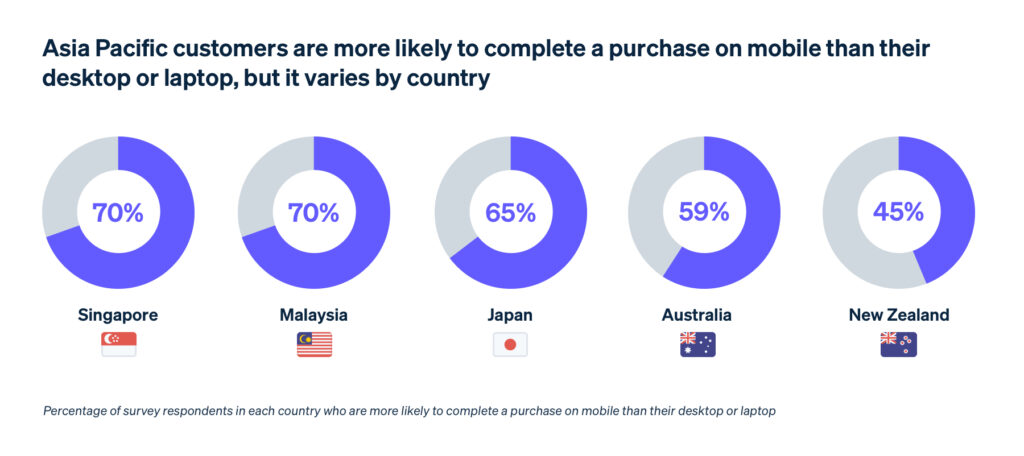
(Source – Shutterstock)
E-commerce checkout in Malaysia is filled with errors
Despite the positive growth experienced by the e-commerce industry, there are still certain problems that are bothering customers when it comes to perfecting their purchase experience. These teething problems may not lead to customers abandoning their purchase, but it still does cause an inconvenience and could impact future decisions by the customers.
Be it the user-friendliness of the site or security requirements, the most common problem for customers is the basic checkout errors they face in their purchase experience. In fact, according to a new study from Stripe, a financial infrastructure platform for businesses, checkouts on the largest e-commerce websites are riddled with mistakes and fall far short of the standards shoppers expect.
The State of Checkouts in 2022 report was based on a review of the 100 top e-commerce websites in Malaysia, uncovering significant errors in the checkout pages of many of the region’s most visited websites. The e-commerce websites filled with error-ridden checkouts can frustrate customers and cost businesses revenue.
According to the report, online shoppers expect the checkout process to be fast and they leave when it’s not. In Malaysia, more than half (53%) said they would abandon a purchase if the checkout process took three minutes. This means businesses are losing about half of all online customers who intend to make a purchase. Additionally, only 10% of customers always complete their online purchases, implying the majority (~90%) do not make a purchase.
The report also highlighted that in Malaysia, 58% do not display security logos on their checkout page, jeopardizing customer trust while 69% do not follow up with customers who had abandoned their carts. Interestingly, 94% do not recommend higher-end versions of a product or service through upselling while 44% do not recommend related products or services through cross-selling. 34% of websites also allow customers to attempt to pay with an expired card, increasing the likelihood of payment errors.

(Source – Stripe)
The checkout experience
The checkout experience, be it on mobile, tablet or desktop needs to be prioritized. On average, over 70% of Malaysian customers use their mobile phones to shop for products online more than they use their desktops or laptop.
Customers are also shopping through social media, with 92% of survey respondents saying they use platforms such as Facebook, Instagram, and YouTube to make purchases. As such, improving the mobile checkout experience becomes increasingly critical for e-commerce players.
At the same time, while 98% of APAC businesses surveyed adapted their checkout flow to a smaller screen, the majority did not support wallets, a mobile-friendly payment method that allows customers to store payment information, such as debit or credit cards, on their phones.
In APAC, the top mobile optimization errors in APAC include 89% that do not support Apple Pay or Google Pay. 66% do not provide the ability to save payment information for future purchases while 26% failed to surface a numeric keypad to help enter card information.
Apart from mobile optimization, another problem in checkout involves offering the right local payment options that can help increase revenue. An overwhelming 99% of Malaysian customers said it was important for a website to provide common payment methods.
With Buy Now Pay Later (BNPL) methods, like Grab’s PayLater, becoming increasingly popular, 74% of Malaysian customers said they would be more likely to complete a purchase if a BNPL option was available. However, only 40% of e-commerce sites in APAC offer them.
“In light of economic uncertainty, businesses that are ignoring their checkout experiences are subjecting themselves to unnecessary revenue loss. There are easy fixes to these issues, especially with using technology like Stripe Checkout, which addresses these common errors seamlessly, ensuring no money is left on the table because of an abandoned cart,” commented Paul Harapin, Head of Asia Pacific & Japan, Stripe.
READ MORE
- The criticality of endpoint management in cybersecurity and operations
- Ethical AI: The renewed importance of safeguarding data and customer privacy in Generative AI applications
- How Japan balances AI-driven opportunities with cybersecurity needs
- Deploying SASE: Benchmarking your approach
- Insurance everywhere all at once: the digital transformation of the APAC insurance industry


